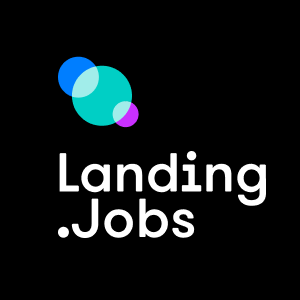Prologue: This article is the second of a series focused on displaying the problems we identified in tech recruitment processes. Together they led us to create a movement that aims to improve the state of the industry, which you can join here.
Imagine going on a first date with someone who never speaks their mind: you ask them if they want to go out or stay at home and they don’t tell you. You ask them what they want to eat and they just shrug. You ask them if something’s wrong and they say they are fine. You’re going to get frustrated. And if you choose staying home when they actually wanted to go out, so will they.
That’s a basic lack of transparency, and you’re both going to lose. Always.
Thousands of people’s relationships are being undermined by that lack of transparency. But it isn’t dating we’re talking about: it’s hiring. The relationship between employee and employer, recruitee and recruiter are in trouble. And one big reason for it is how opaque the recruitment process is.
“Everything is a misery,” one engineer we questioned complained. “You never know what the company wants, what the process is like, what the salaries are like…”
That’s a basic lack of transparency.
The result? Candidates apply for jobs for which they have no interest at all: sometimes recruiters won’t mention the fact that the opening was in a different country for two or three interactions. Or the employer refuses to talk about the salary until the final interview and the pay just isn’t interesting. The candidates will feel lost and confused. Sometimes even cheated. They’ll have spent hours in the recruitment process, or preparing for it, that they now know were in vain. They’ll have been needlessly anxious and stressed. Nervous.
And the thing is, of course: both sides lose. A recruiter might say they have 50 qualified leads for a job, but if none of those are interested in moving to Kandahar he won’t be able to close the deal. As an employer, you too have much more pressing things to do than wasting 5 hours interviewing a candidate for CTO that is a complete misfit, when a little more transparency from the start might have avoided him applying in the first place.
Of course, candidates owe recruiters transparency too. Trust is a two-way street, they say. Candidates need to be clear and upfront about their expectations. What they have on the table and what they’re looking for. Because when they’re not transparent, they might find themselves moving up the recruitment process when they’re not actually a good fit or when the job opening isn’t really what they’re looking for. Once again, you see, lack of transparency causes entropy and frustration for everybody involved.
How do we solve this?
We can start by realizing that hiring the perfect candidate for a spot can feel like a game of chance, sometimes, but it’s not poker. So there’s no point not showing what’s on your hand. Share all the information you think might be relevant or helpful: what the company hiring is called, what it does, where it’s based (if it has a base at all). What kind of salary the company is thinking of paying, and what are the perks that come with the job. What is the company culture like. All of these will help you save time and find candidates that fulfill your job’s profile much better.
It’s really important to be honest with all of these things. In our research, most candidates seemed to remember vividly cases of companies that had “inflated” their job listings. One listing, for example, claimed remote work was possible, but: “I was told during the interview that it wasn’t.” Another company promised staff members would get to fly abroad and attend international conventions. That too was not exactly true, it turned out.
While we understand where this temptation comes from, several companies that have been experimenting with increasing transparency have reported changes like drastic reductions in their turnover rate and improvements in company culture and team-spirit.
The process steps are another great opportunity to be transparent, even if it’s generally overlooked. If you’re upfront with your candidates about what the recruitment process is (how many stages, when decisions will be made, who’ll be making them, based on what, and what feedback to expect) then not only will you be reducing friction and entropy, meaning you’ll see the best part of every candidate, you’ll also be placing yourself as a top recruiter. Even candidates that don’t get the spot will remember the experience, respect your company, and recommend you to other colleagues looking for a job.
In the end, it all comes down to this: if both parties are transparent and truthful, honest and upfront, they will have created a bond of trust and respect. Then, when a candidate is hired, the foundations for a healthy and productive relationship will have been set long before the first day on the job.
Our goal with the “Make Tech Recruitment Better” manifesto is to help the industry improving its standards. Together we can do better.
Let’s make it more transparent,
Sebastian Paepke
Business Lead DE @ Landing.jobs
PS: You can check the 1st, 3rd and 4th Blog Post of this series here, here, and here, respectively.






0 Comments